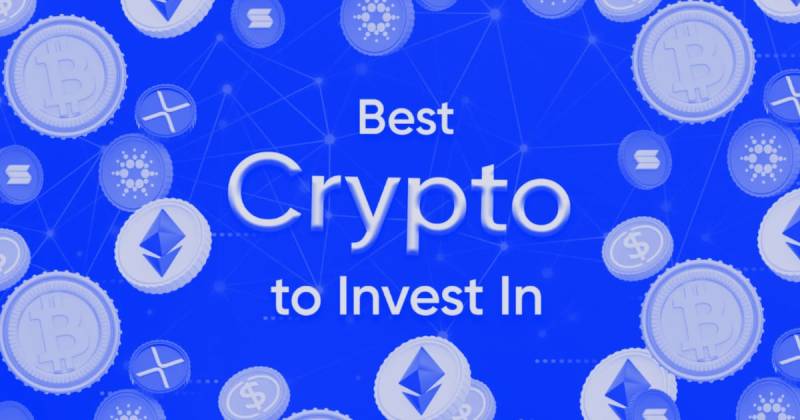 |
|
 |
|
 |
|
 |
|
 |
|
 |
|
 |
|
 |
|
 |
|
 |
|
 |
|
 |
|
 |
|
 |
|
 |
|
Cryptocurrency News Articles
Arweave (AR) Is Making History by Sending Its Genesis Block to the Moon (Literally!) This Week
Jan 16, 2025 at 01:25 pm
The moon's stable environment is believed to be an ideal location for long-term data preservation, as it's free from Earth's weathering and natural disturbances.

Arweave (AR) is making history this week by sending its Genesis Block to the moon (literally!), stored in an innovative synthetic DNA format.
The data will be housed in a metal pyramid aboard a lunar lander, a collaboration between molecular storage company Iridia and space exploration firm LifeShip, according to a press release on January 15.
The moon's stable environment is said to be ideal for long-term data preservation, being free from Earth's weathering and natural disturbances.
The Genesis Block's storage system combines Iridia's shielded nanotechnology with synthetic DNA storage techniques, which offer advantages in data density and longevity while consuming minimal energy.
“There is actually something pretty interesting here,” Arweave founder Sam Williams said in a statement.
[Obligatory 'going to moon' joke here]
But more seriously:
There is actually something pretty interesting here.
Short post about DePIN incentive models and innovation 👇
Proof of work networks are permissionless and agnostic buyers of resources. Bitcoin buys SHA2-256 hashes, and Ethereum buys anything that can be used to perform computation on a EVM.
This makes PoW networks a very interesting tool for driving innovation.
For example, if there is a new cryptographic primitive that is discovered, it can immediately be sold to Bitcoin or Ethereum miners, who will use it to secure the network.
This creates a strong incentive for cryptographers to work on new primitives that are not only interesting from a theoretical perspective, but also have a practical use case.
The same applies to any other technology that can be used by PoW networks. For example, a new energy efficient cooling technology could quickly be sold to Bitcoin or Ethereum miners.
This is in contrast to, say, closed networks like Polkadot, where new technologies have to be approved by the Polkadot council before they can be used by the network.
Or in contrast to networks that claim to be permissionless but actually aren't, like Solana, where new technologies have to be approved by the Solana Foundation before they can be used by the network.
This makes sense from a security perspective. But it also stifles innovation.
If you want to drive innovation, you need a permissionless and agnostic buyer of resources. And that's what PoW networks provide.
Enjoy the rest of your day! 🙂https://t.co/w1ySrnRgCr pic.twitter.com/KNosk1qOOI
Meanwhile, AR has gained 7% in the past 24 hours. However, it has not seen the same returns as other altcoins over the past year.
While it is up 68% from last year, the past few months have seen it drop from US$48 in May 2024 to currently US$16.88.
Just ahead of the May 2024 local top, Arweave made waves with their ‘hyper parallel computer’.
AO the Computer is designed to infinitely scale blockchains for enhanced computational capabilities. This could enable large language models, like AI-driven smart contracts, to operate directly on the blockchain, ensuring transparent and verifiable execution without a central authority.
“We are building a hyper parallel computer that will push the boundaries of what's possible with blockchains,” Williams explained.
Disclaimer:info@kdj.com
The information provided is not trading advice. kdj.com does not assume any responsibility for any investments made based on the information provided in this article. Cryptocurrencies are highly volatile and it is highly recommended that you invest with caution after thorough research!
If you believe that the content used on this website infringes your copyright, please contact us immediately (info@kdj.com) and we will delete it promptly.
-

-

- The Best Crypto to Buy Before Bitcoin's Halving Shakes Things Up
- Feb 24, 2025 at 03:20 am
- Every cycle, new opportunities pop up, and right now, Dawgz AI is leading the pack. Unlike most meme coins, this one actually does something - it runs high-frequency trading bots to make crypto token investing effortless.
-

-

-
![What Lies Ahead for XRP in ... [+] 2025? What Lies Ahead for XRP in ... [+] 2025?](/assets/pc/images/moren/280_160.png)
-

-

- Crypto Market Correction: Bitcoin, Ethereum, and Major Altcoins Face Decline Amid Market Correction, Regulatory Uncertainty, and Macroeconomic Pressures
- Feb 24, 2025 at 03:05 am
- Stay updated on the latest cryptocurrency market trends as Bitcoin, Ethereum, and major altcoins face a broad decline amid market correction, regulatory uncertainty, and macroeconomic pressures. Explore key price movements, investor sentiment, and upcoming events shaping the crypto landscape.
-

-






















































![What Lies Ahead for XRP in ... [+] 2025? What Lies Ahead for XRP in ... [+] 2025?](/uploads/2025/02/24/cryptocurrencies-news/articles/lies-ahead-xrp/img-1_800_559.44055944056.jpg)



